Select Language
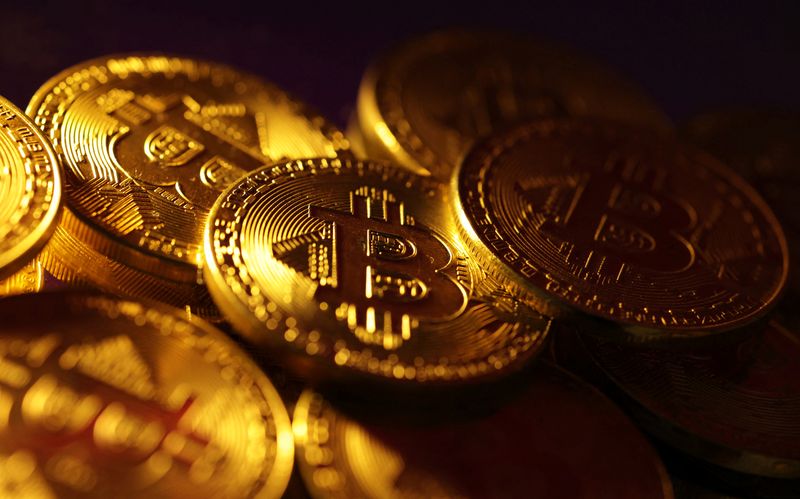
SINGAPORE (Reuters) - Bitcoin rose to a record high above $94,000 as a report that Donald Trump's social media company was in talks to buy crypto trading firm Bakkt added to hopes of a cryptocurrency-friendly regime under the incoming Trump administration.
Bitcoin, the world's biggest and best-known cryptocurrency, has more than doubled this year. It was last at $92,104 in Asian hours on Wednesday, having touched a record high $94,078 just toward the end of the previous session.
The Financial Times, citing two people with knowledge, said Trump Media and Technology Group, which operates Truth Social, is close to an all-stock acquisition of Bakkt, which is backed by NYSE-owner Intercontinental Exchange (NYSE:ICE).
Tony Sycamore, market analyst at IG, said bitcoin's rise to a record high was supported by the Trump deal talk report as well as traders taking advantage of the first day of options trading on the Nasdaq over BlackRock (NYSE:BLK)'s Bitcoin ETF.
Cryptocurrencies have soared since the Nov. 5 U.S. election as traders bet President-elect Trump's promised support for digital assets would lead to a less restrictive regulatory regime and inject some life back into bitcoin after a listless few months.
The growing excitement has taken the global cryptocurrency market's value above $3 trillion to a record high, based on analytics and data aggregator CoinGecko.
Chris Weston, head of research at Australian online broker Pepperstone, said there is real underlying buying pressure for bitcoin, and "another kick higher should bring in a fresh chase from those who like to buy what's strong".
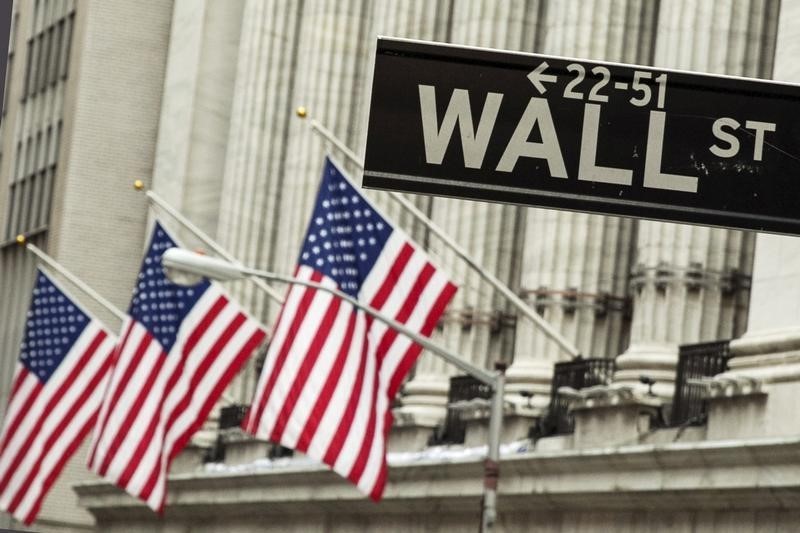
Investing.com-- U.S. stock index futures rose slightly in evening deals on Tuesday, tracking a positive session on Wall Street as technology stocks advanced ahead of earnings from market darling Nvidia.
Positive earnings from retail giant Walmart Inc (NYSE:WMT) also helped lift sentiment, with shares of the supermarket operator hitting a record high after it raised its annual guidance.
Markets largely looked past an escalation in the Russia-Ukraine conflict after Moscow lowered the threshold for launching a nuclear strike. This was after the U.S. approved the use of long-range missiles for Ukraine against Russia.
S&P 500 Futures rose 0.1% to 5,943.75 points, while Nasdaq 100 Futures rose 0.1% to 20,777.75 points by 18:26 ET (23:26 GMT). Dow Jones Futures rose 0.1% to 43,448.0 points.
Nvidia rises ahead of earnings, tech upbeat
Technology stocks advanced on Tuesday, led by a nearly 5% rally in NVIDIA Corporation (NASDAQ:NVDA) before its quarterly earnings, which are due after the bell on Wednesday. The stock rose 0.3% in aftermarket trade.
The chipmaker, which recently overtook Apple Inc (NASDAQ:AAPL) to become the most valuable listed company in the world, is considered as a bellwether for artificial intelligence demand.
Technology stocks were mostly upbeat in anticipation of a strong quarterly print from the firm, which has nearly tripled in value this year on an AI-fueled boom.
Gains in Nvidia spilled over into broader tech stocks on Tuesday. Alphabet Inc (NASDAQ:GOOGL) rose 1.6% during the session even as a report said the Department of Justice planned to pressure the firm into spinning off its Chrome internet browser, over antitrust concerns.
Among other stocks, Comcast Corp (NASDAQ:CMCSA) rose 2.3% in aftermarket trade after The Wall Street Journal reported the firm was close to approving a $7 billion spinoff of its cable TV assets.
Wall St close to record highs
Wall Street indexes rose on Tuesday and remained in sight of recent record highs, although risk appetite appeared to be cooling after Donald Trump’s election victory earlier in November.
Investors were now watching for just what Trump’s policies and cabinet picks will entail for the economy, amid some concerns that his policies will spur a long term pick-up in inflation.
Still, investors largely maintained bets that interest rates will fall in the near-term, with traders pricing in a 60.6% chance for a 25 basis point cut by the Federal Reserve in December, CME Fedwatch showed.
The S&P 500 rose 0.4% to 5,916.98 points, while the NASDAQ Composite surged 1% to 18,983.43 points on Tuesday. The Dow Jones Industrial Average lagged, falling 0.3% to 43,268.94 points.

By Olena Harmash
KYIV (Reuters) -Ukraine's parliament approved the 2025 state budget in the final reading on Tuesday, channelling more funds for Kyiv's defence efforts as Russia's full-scale invasion reached its 1,000th day.
Ukraine plans to spend 2.2 trillion hryvnias ($53.7 billion), or about 26% of its gross domestic product, on defence and security next year, officials said.
"All taxes of citizens and businesses next year will be directed to the defence and security of our country," Prime Minister Denys Shmyhal said.
"Record amount of funds will be directed to weapons' production and purchases. There will be more funding to modernise our weapon industry and also to buy drones," he said in a statement.
As Kyiv troops battle a larger and better-equipped enemy along a more than 1,000-kilometre frontline, demand for weapons, ammunition and funds to pay soldiers' wages keeps growing.
Next (LON:NXT) year budget spending is planned at 3.6 trillion hryvnias while revenues excluding grants and international aid, are targeted at 2.05 trillion hryvnias, the finance ministry said.
The government will implement Ukraine's first wartime tax increases for population and businesses to be able to boost its domestic revenues in 2025.
The budget deficit of about $38 billion will be covered with financial aid from Kyiv's Western partners as well as the government's domestic borrowing.
The International Monetary Fund, a key lender, said that IMF staff and Ukrainian authorities have reached an agreement that would give Ukraine access to about $1.1 billion.
Finance Minister Serhiy Marchenko said the budget's other priorities next year would be to support residents as they battle wartime economic and security challenges.
The government also plans measures to support economic recovery but it expects growth to slow to 2.7% in 2025 from a target of 4% this year due to war, expected energy deficit and staff shortages.
Ukraine's weapon production industry has been one of the key drivers for economic growth this year and the government plans to ramp up production further in 2025.
President Volodymyr Zelenskiy, who presented Ukraine's resilience plan, said Ukraine was planning to produce at least 30,000 long-range drones and 3,000 cruise missiles and drone missiles next year.
The government will channel 739 billion hryvnias into weapons production in 2025, 34.1 billion hryvnias more than this year, the finance ministry said.
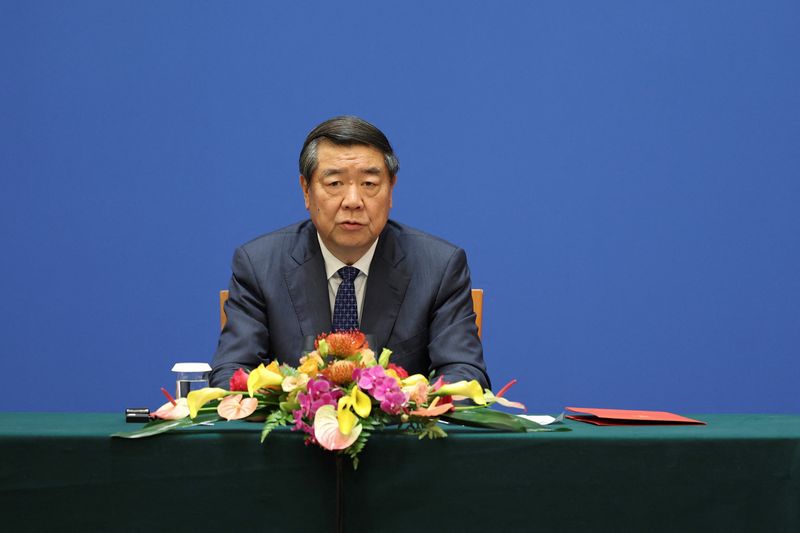
By Selena Li and Kane Wu
HONG KONG (Reuters) -Beijing told top Wall Street executives on Tuesday that it will move ahead with capital market reforms and in the opening up of its financial sector for foreigners, while supporting Hong Kong in bolstering its credentials as a global financial hub.
The pledge from Chinese policymakers at the Global Financial Leaders' Investment Summit comes amid growing geopolitical tensions following Donald Trump's election as the next U.S. president, and a destabilising slowdown in the world's second-largest economy.
"We will create an inclusive favourable business environment for outside investors and business leaders coming to China," said Zhu Hexin, deputy governor of China's central bank and administrator of the State Administration of Foreign Exchange.
"So we open our arms to foreign investors. They're welcome to the mainland to share in the success of China's economic development."
China Securities Regulatory Commission (CSRC) Chairman Wu Qing added that China would remove investment barriers and implement supporting measures while deepening capital market reforms.
Beijing will also support more high-quality enterprises from China to list and issue bonds in Hong Kong, China's Vice Premier He Lifeng said, offering backing to the city at a time when its future as a financial centre is facing scrutiny.
The summit, hosted by the Hong Kong Monetary Authority (HKMA), is being attended by the CEOs of top Wall Street firms including Citigroup (NYSE:C), Goldman Sachs and Morgan Stanley (NYSE:MS).
Hong Kong's standing as a global financial hub has been clouded in recent years after Beijing imposed a sweeping national security law in 2020. Western governments say it has hit the territory's autonomy, but Chinese authorities say it was necessary to restore order after mass pro-democracy protests in 2019.
On Tuesday, Hong Kong's High Court jailed 45 pro-democracy activists for up to 10 years following a landmark national security trial that has damaged the city's once feisty democracy movement and drawn criticism from the U.S. and other countries.
Chinese vice premier He said the country's recent stimulus measures were gradually taking effect and benefitting Hong Kong's markets. He said Beijing would help support Chinese financial institutions to expand their businesses in Hong Kong.
"We will improve the mechanism for the regular issuance of treasury bonds, steadily increase issuance in Hong Kong, and support Hong Kong in consolidating its position as a global financial business hub," He said, without providing specifics.
'BATTLING DEFLATION'
There have been $9.1 billion worth of listings in Hong Kong in 2024, according to Dealogic data, compared with $5.88 billion in 2023. Despite the pickup, issuance volumes remain well off the 2020 peak of $51.6 billion.
The deals slowdown has prompted Western and Chinese financial firms to slash hundreds of investment banking jobs in the past two years. Some international law firms have also scaled back or exited their businesses in the greater China region.
Citigroup chief executive Jane Fraser and Goldman Sachs chairman and CEO David Solomon told the forum Trump's return to the White House next year should spur more corporate buyout activity on the prospect of reduced regulation.
"When we think about deregulation tapering there (U.S), we saw an almost immediate unlock happening with the election result," Fraser said.
"... We saw a huge growth in our pipelines, almost overnight in M&A, IPOs, our sponsor clients are definitely back and I would call it "the big unlock" that we've been waiting for a long time."
In Asia, however, the deals outlook remains sluggish as China is grappling with an economic slowdown, fuelled by a property sector debt crisis and the lingering effects of the pandemic lockdowns.
Beijing unveiled earlier this month a 10 trillion yuan ($1.38 trillion) debt package to ease local government financing strains and stabilise the country's flagging growth.
Morgan Stanley CEO Ted Pick said it would take time for the stimulus measures to show effect, but early signs of recovery can be seen.
"Battling deflation takes time. And so the monetary impulse is starting to take hold, lower interest rates, more attractive mortgage rates, inducements to new ownership. The fiscal piece will take time."
Goldman's Solomon, however, said global investors who have "put a lot of capital" into China continue to be concerned about getting capital out of the country.
"And so in that context, I think messages around the ability to both attract capital and have capital come in and come out -- very, very important for global investors."
($1 = 7.2364 Chinese yuan)
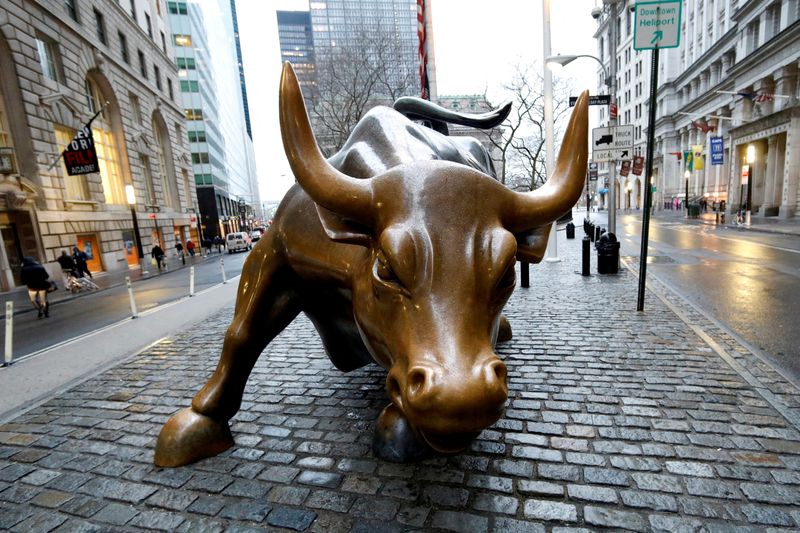
By Siddarth S
(Reuters) - Goldman Sachs has forecast the S&P 500 index would reach 6,500 by the end of 2025, joining peer Morgan Stanley (NYSE:MS), on the back of continued growth in the U.S. economy and corporate earnings.
The Wall Street brokerage's target implied an upside of 10.3% from the index's last close of 5,893.62.
On Monday, Morgan Stanley also forecast the benchmark index would hit 6,500 by the end of next year. It estimated the recent broadening in U.S. earnings growth would continue in 2025 as the Federal Reserve cuts interest rates into next year and as business cycle indicators improve further.
Goldman said the so-called 'Magnificent 7' stocks - Amazon (NASDAQ:AMZN), Apple (NASDAQ:AAPL), Alphabet (NASDAQ:GOOGL), Meta Platforms (NASDAQ:META), Microsoft (NASDAQ:MSFT), Nvidia (NASDAQ:NVDA), and Tesla (NASDAQ:TSLA) collectively will outperform the rest of the 493 companies in the benchmark index next year.
However, the 'Magnificent 7' stocks will outperform by about 7 percentage points only, the slimmest margin in seven years, Goldman said in a note dated Monday.
"Although the 'micro' earnings story supports continued outperformance of the Magnificent 7 stocks, the balance of risk from more “macro” factors such as growth and trade policy lean in favor of the S&P 493 (companies)," the brokerage said.
Goldman estimated corporate earnings to grow 11% and a real U.S. gross domestic product growth of 2.5% in 2025.
The brokerage also warned that risks remain high for the broader U.S. equity market heading into 2025, due to a potential threat from tariffs and higher bond yields.
"At the other end of the distribution, a friendlier mix of fiscal policy or a more dovish Fed present upside risks," Goldman added.
Trump's victory in the U.S. Presidential election earlier this month has brought into sharp focus his campaign pledge to lower taxes and impose higher tariffs, moves that are expected to spur inflation and reduce the Fed's scope to ease interest rates.
The brokerage also projected earnings-per-share of S&P 500 companies at $268 in 2025.
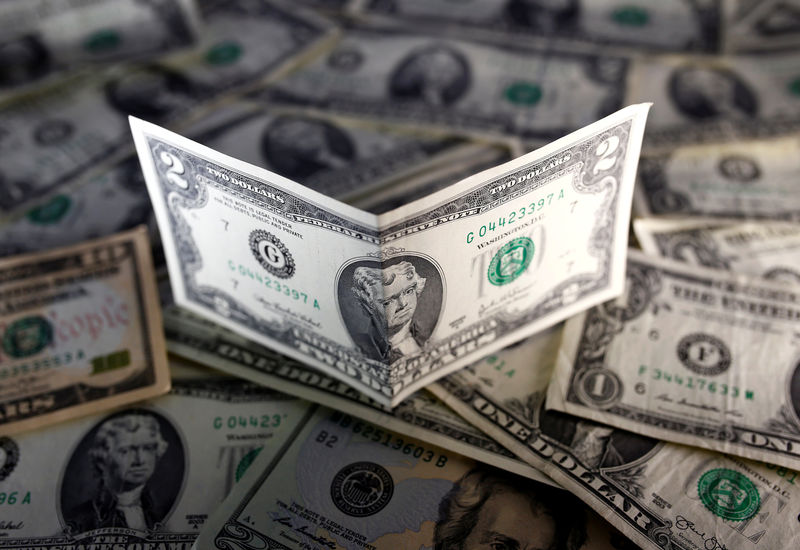
Investing.com-- Most Asian currencies firmed slightly on Tuesday, while the dollar retreated further from recent one-year highs amid persistent bets that the Federal Reserve will cut interest rates in December.
Regional markets were also bracing for more economic cues from China and Japan this week, as well as a swathe of purchasing managers index readings from major economies.
Most Asian currencies were nursing steep losses through the past week, as strong U.S. inflation readings and less dovish statements from the Federal Reserve sparked some uncertainty over just how much interest rates will fall in the coming months.
Donald Trump’s election win also saw traders pile en masse into the dollar, putting the greenback at a one-year high.
But the dollar index and dollar index futures fell 0.1% each on Tuesday, retreating further from recent peaks as markets held on to bets that rates will fall in the short-term.
Traders were seen pricing in a 59.8% chance for a 25 basis point cut in December, and a 40.2% chance rates will remain unchanged, CME Fedwatch showed.
This notion offered some relief to Asian markets, although the longer term outlook for rates still remained uncertain, especially in the face of a Trump presidency.
Chinese yuan muted as LPR decision looms
The Chinese yuan moved little on Tuesday, with the USDCNY pair remaining in sight of recent three-month highs.
Focus this week is on an interest rate decision by the People’s Bank of China, although economists expect the central bank to leave its loan prime rate unchanged on Wednesday.
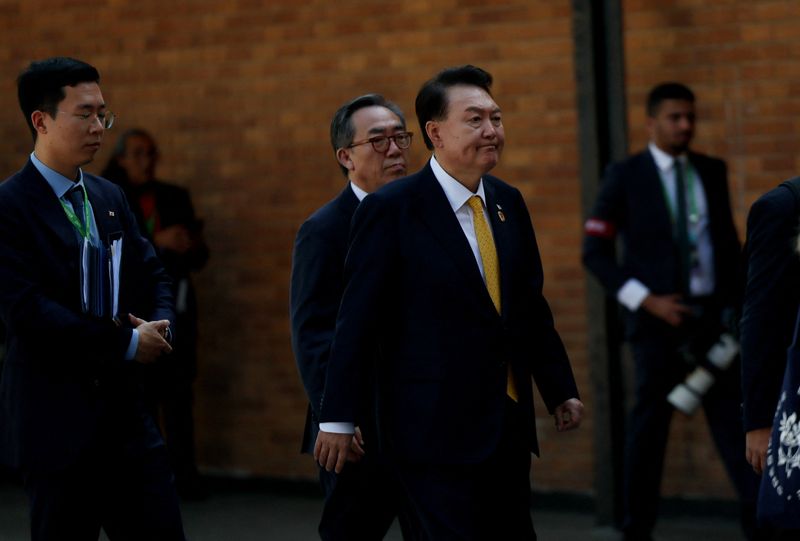
SEOUL (Reuters) - South Korean President Yoon Suk Yeol has pledged a 45% increase in the country's contribution to the World Bank's International Development Association fund to more than $600 million, the finance ministry said on Tuesday.
The country, once a beneficiary during the 1960-1970s, will contribute this year around 845.6 billion won ($608.26 million) to the fund for financial aid to low-income countries, up from 584.8 billion won in the previous fund replenishment round in 2021.
"It is for South Korea to play a leading role as a global pivot state and to induce active contributions from other countries," the ministry said in a statement.
U.S. President Joe Biden on Monday pledged a record $4 billion contribution during a closed session of the Group of 20 summit in Rio de Janeiro, up from $3.5 billion in 2021.
($1 = 1,390.2000 won)

(Reuters) - U.S. homebuilder sentiment rose to a seven-month high in November and expectations for sales in the next six months surged to the highest in about two-and-a-half years after a Republican election sweep fueled optimism for regulatory changes that could lead to more residential construction, a survey said on Monday.
The National Association of Home Builders/Wells Fargo Housing Market Index rose to 46 this month, the highest since April, from 43 in October. The reading was higher than all 28 estimates in a poll of economists by Reuters, which had a median expectation for 43.
NAHB's measures of current sales and traffic of potential buyers both ticked higher, while expectations for sales over the next six months shot up to the highest since April 2022.
"With the elections now in the rear view mirror, builders are expressing increasing confidence that Republicans gaining all the levers of power in Washington will result in significant regulatory relief for the industry that will lead to the construction of more homes and apartments," said NAHB Chairman Carl Harris, a custom homebuilder from Wichita, Kansas. "This is reflected in a huge jump in builder sales expectations over the next six months."
The Nov. 5 election resulted in Republican control of the White House, with Donald Trump defeating Democrat Kamala Harris, and of both chambers of Congress. While Republicans have promised an aggressive deregulatory push, many of the rules affecting the building industry are determined at the state and local level - zoning laws in particular.

By Florence Tan
SINGAPORE (Reuters) -Oil prices edged up on Monday after fighting between Russia and Ukraine intensified over the weekend, although concerns about fuel demand in China, the world's second-largest consumer, and forecasts of a global oil surplus weighed on markets.
Brent crude futures gained 29 cents, or 0.4%, to $71.33 a barrel by 0502 GMT, while U.S. West Texas Intermediate crude futures were at $67.20 a barrel, up 18 cents, or 0.3%.
Russia unleashed its largest air strike on Ukraine in almost three months on Sunday, causing severe damage to Ukraine's power system.
In a significant reversal of Washington's policy in the Ukraine-Russia conflict, President Joe Biden's administration has allowed Ukraine to use U.S.-made weapons to strike deep into Russia, two U.S. officials and a source familiar with the decision said on Sunday.
There was no immediate response from the Kremlin, which has warned that it would see a move to loosen the limits on Ukraine's use of U.S. weapons as a major escalation.
"Biden allowing Ukraine to strike Russian forces around Kursk with long-range missiles might see a geopolitical bid come back into oil as it is an escalation of tensions there, in response to North Korean troops entering the fray," IG markets analyst Tony Sycamore said.
Saul Kavonic, an energy analyst at MST Marquee, said: "So far there has been little impact on Russian oil exports, but if Ukraine were to target more oil infrastructure that could see oil markets elevate further."
In Russia, at least three refineries have had to halt processing or cut runs due to heavy losses amid export curbs, rising crude prices and high borrowing costs, according to five industry sources.
Brent and WTI slid more than 3% last week on weak data from China and after the International Energy Agency forecasted that global oil supply will exceed demand by more than 1 million barrels per day in 2025 even if cuts remain in place from OPEC+.
China's refinery throughput fell 4.6% in October from last year and as the country's factory output growth slowed last month, government data showed on Friday.
Investors also fretted over the pace and extent of interest rate cuts by the U.S. Federal Reserve that has created uncertainty in global financial markets.
In the U.S., the number of operating oil rigs fell by one to 478 last week, the lowest since the week to July 19, Baker Hughes (NASDAQ:BKR) data showed.

Investing.com -- Tesla Inc (NASDAQ:TSLA) shares rose over 4% in after-hours trading on Robinhood (NASDAQ:HOOD) Sunday evening following reports from Bloomberg that the upcoming Trump administration will establish a federal framework for fully self-driving vehicles and make it a top priority for the Department of Transportation.
The development is seen as a major boon for Tesla, which has been leading the charge for fully autonomous driving. CEO Elon Musk has been a major supporter of President-elect Donald Trump and is now considered in his inner circle. Musk and Vivek Ramaswamy are heading up the recently announced Department of Government Efficiency (DOGE), which was tasked with cutting government spending waste.
The Trump administration is seeking leaders to develop the department’s framework for regulating self-driving vehicles. Current federal rules significantly restrict cars without foot pedals and steering wheels. Former Uber (NYSE:UBER) executive Emil Michael is said to be one of the candidates under consideration to lead the department. Republican Representatives Sam Graves and Garrett Graves are also said to have been considered.
Telsa recently announced plans to launch a Robotaxi service in 2026. Current regulations could limit the potential service. However, Musk’s influence in the new Trump administration could lay the groundwork for mass deployment and success of the new Tesla service.
Tesla shares have been up 28% since Trump won the election on November 5th.

